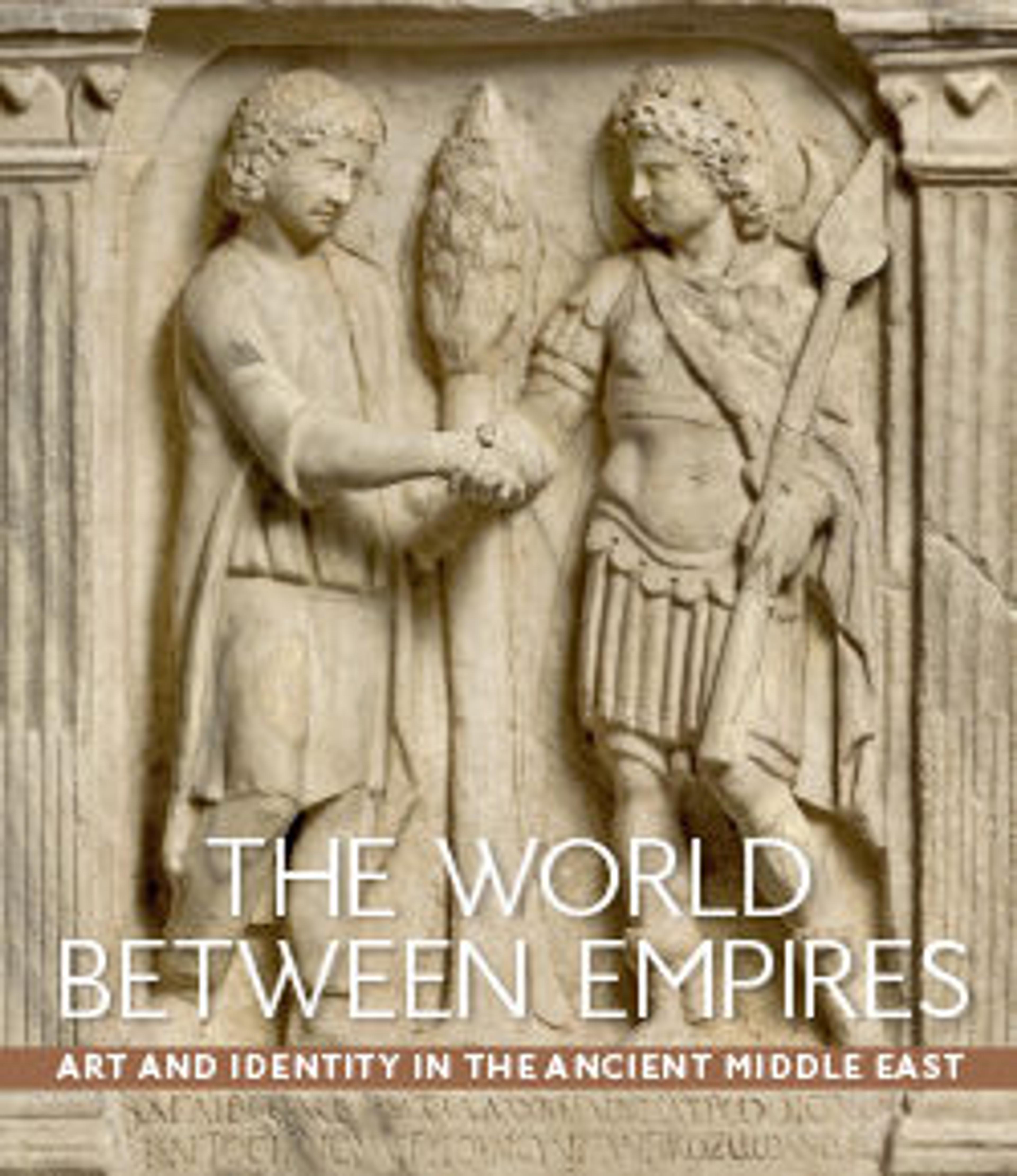Funerary relief
This relief is a type of funerary monument characteristic of the prosperous caravan city of Palmyra during the first three centuries A.D. Reliefs with a representation of the deceased and a short identifying inscription were used to seal burial niches in elaborately decorated communal tombs; those with a half-length or bust format became prevalent sometime after A.D. 65.
Shown here is the upper body of a beardless man in high relief who faces directly toward the viewer, dressed in a Greek cloak known as a himation, worn over a chiton, or tunic, and wrapped around the right arm like a sling. The folds of the garment are carved in angular ridges. He holds a small object in his left hand, probably a schedula (book roll), and wears a ring on the little finger. Originally, the background of the relief was probably inscribed in Palmyrene Aramaic with the name and lineage of the deceased, although it is now blank with a rough surface that suggests it may have been erased in preparation for reuse. The fleshy chin and jaw, together with deep vertical wrinkles around the mouth, characterize the deceased as middle-aged. His upper eyelids are modeled, and carved circles mark the iris of each eye. Above the thick eyebrows, the forehead is creased with horizontal furrows, creating a stern expression. The gaze does not meet the viewer’s but extends far into the distance. The man’s short hair is depicted as a mass of wavy locks that cover his head like a cap, ending above his protruding ears. Chips and cracks in the surface are due to the use of soft local limestone. The relief can be stylistically dated to around 150-200 A.D. because of the figure’s beardlessness, and the treatment of the facial features and the garment folds.
Shown here is the upper body of a beardless man in high relief who faces directly toward the viewer, dressed in a Greek cloak known as a himation, worn over a chiton, or tunic, and wrapped around the right arm like a sling. The folds of the garment are carved in angular ridges. He holds a small object in his left hand, probably a schedula (book roll), and wears a ring on the little finger. Originally, the background of the relief was probably inscribed in Palmyrene Aramaic with the name and lineage of the deceased, although it is now blank with a rough surface that suggests it may have been erased in preparation for reuse. The fleshy chin and jaw, together with deep vertical wrinkles around the mouth, characterize the deceased as middle-aged. His upper eyelids are modeled, and carved circles mark the iris of each eye. Above the thick eyebrows, the forehead is creased with horizontal furrows, creating a stern expression. The gaze does not meet the viewer’s but extends far into the distance. The man’s short hair is depicted as a mass of wavy locks that cover his head like a cap, ending above his protruding ears. Chips and cracks in the surface are due to the use of soft local limestone. The relief can be stylistically dated to around 150-200 A.D. because of the figure’s beardlessness, and the treatment of the facial features and the garment folds.
Artwork Details
- Title: Funerary relief
- Date: ca. 150–200
- Geography: From Syria, Palmyra
- Medium: Limestone
- Dimensions: 20 1/2 in. × 17 in. × 8 1/2 in. (52.1 × 43.2 × 21.6 cm)
- Credit Line: Purchase, 1902
- Object Number: 02.29.2
- Curatorial Department: Ancient West Asian Art
More Artwork
Research Resources
The Met provides unparalleled resources for research and welcomes an international community of students and scholars. The Met's Open Access API is where creators and researchers can connect to the The Met collection. Open Access data and public domain images are available for unrestricted commercial and noncommercial use without permission or fee.
To request images under copyright and other restrictions, please use this Image Request form.
Feedback
We continue to research and examine historical and cultural context for objects in The Met collection. If you have comments or questions about this object record, please complete and submit this form. The Museum looks forward to receiving your comments.
